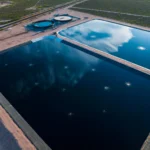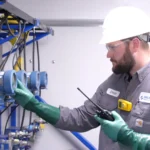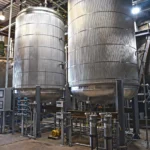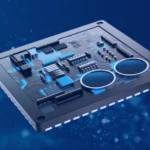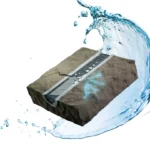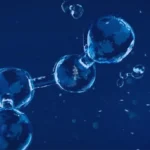Bacteria are extremely detrimental to an oilfield well program. Once contaminated with bacteria, the well can experience souring, bore damage, quality issues, and conductivity issues. To address this, most well completions operations use disinfectants of various types, to disinfect the water.
But how do you know it worked?
There are essentially three cost-effective and field-expedient solutions for checking bacteria levels in your water during completions. Let’s review the pros and cons of each.
The ATP Test
The ATP (Adenosine Triphosphate) test uses a hand-held tester with a consumable dipstick. The dipstick is exposed to the water and picks up some of the bacteria. The dipstick is then inserted into the meter where a reaction occurs & a reading of the life-indicating ATP molecule found in the water.
Pros: This method is fast and simple. ATP meters give out readings in about 60 seconds.
Cons: ATP meters are notoriously unreliable and very operator-sensitive.
Shooting Bottles
This method uses biological sample veils that are pre-dosed with nutrients favored by the bacteria of interest in a water solution with the same salinity of the water being tested. To start, a 10mL vial is injected with 1mL of water sample, creating a 1:10 dilution. 1 mL of sample water is then immediately drawn back out of that 10 mL vial, and shot into another identical precharged 10 mL bottle of salty nutrients. That second bottle is now effectively 1:100 dilution. Continue with yet another bottle and repeat until there are six bottles in total. That 6th bottle has water that is diluted 1 million times. The six bottles are then placed in a temperature controlled incubator and allowed to settle for 21 days. As time goes on, any bottle that has the bacteria, will change colors. If only the first two bottles turn, that indicates a bacteria count of 10-100 colonies in that 1 mL water sample. If all 6 bottles turn, that indicates that a million colonies of bacteria were in that 1 mL of sample water. That would be a heavily contaminated water!
Pros: This method is much more reliable than the ATP test. It even allows tailored nutrient content to allow identification of specific types of bacteria.
Cons: Shooting bottles is not very cost-effective. It takes up to two days before the first bottle will even turn and official results cannot be known until the full 21 day incubation period is complete.
Measuring Residual ClO2
This method is sometimes used as a shortcut and rapid-response bacteria indicator. When ClO2 is being used for the treatment, measuring residual ClO2 in the treated water is an indicator of bacteria. The theory is that once the water is fully disinfected, it will stop consuming ClO2. So if the treated water has residual ClO2, then it is concluded that the water has no more living bacteria in it.
Pros: Due to the fast reaction rate of ClO2, this can be done on-location, giving in-field feedback.
Cons: A fairly crude yes/no indicator. Also, if the treated water is still turbid, then bacteria may be inaccessible to the ClO2 while inside some of the suspended solids.
What should operators do to avoid bacteria in their water? Choose the right option for disinfection and biocontrol. A reliable, quality water source is key to successful completion. In a sea of promising options, Select offers oilfield experienced technical expertise and consulting to help you choose the right technology for your operations. To learn more about water treatment at Select, contact an experienced member of our team.
